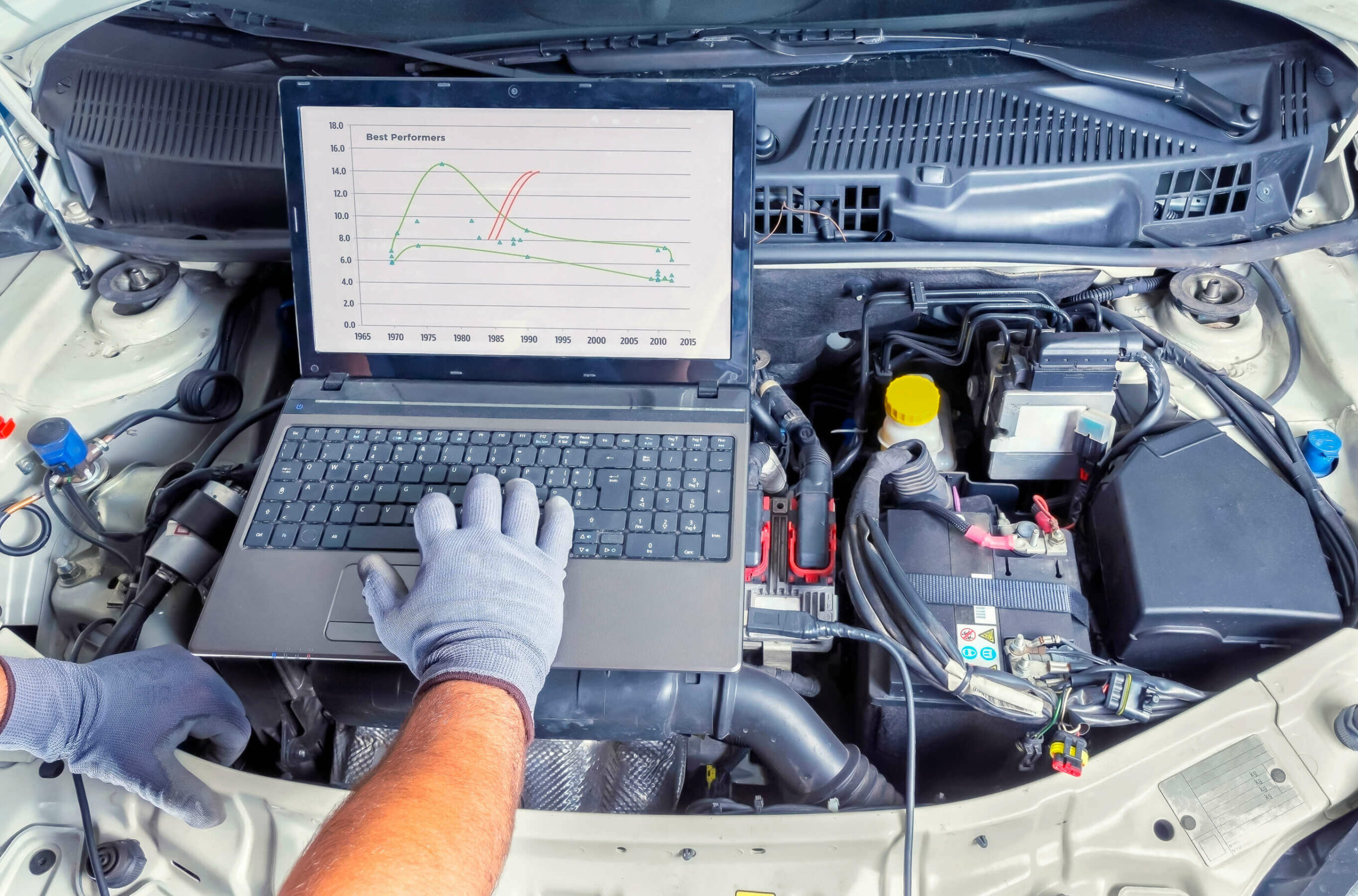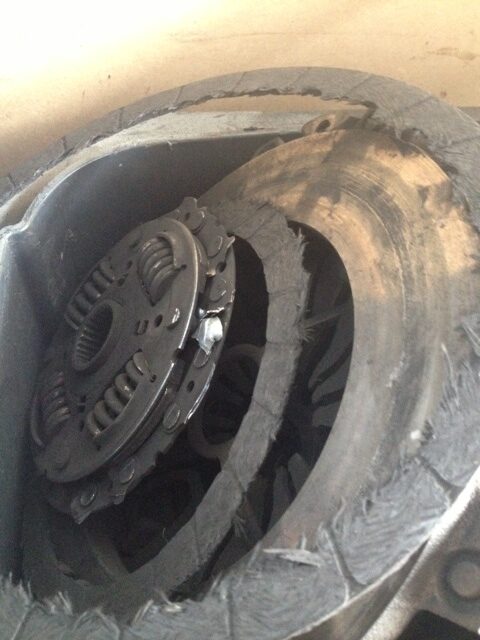After writing the first article about choosing knowledgable commercial chiptuner our knowledge improved, and we simplified and improved strategy. We also found out that some turbochargers are “uncontrollable” even in stock setting, and boost spikes are partially not chiptuners’ fault.

Simple questions
There is no need to write yet another romantic poetry about questionable business practices of humanoids. Almost everything written in the original article is still valid.
We have boiled all down to simple questions:
- Did you do real field tests or just 15-seconds-dyno-run?
- How is EGT holding up after one minute of full load torture?
- How did you measure smoke opacity?
Don’t forget a commercial company still does it for profit. If you want an optimal engine calibration, you have to do it yourself anyway 😉
Did you do real field test or just dyno
Just check out YouTube and you will find tons of videos from rolling road. Except Banks Power educational videos, I have never seen dyno runs longer than thirty seconds. I dare you to find one dyno run longer than one minute.
Australian Subaru Impreza club. Find a one dyno run longer than thirty seconds. Not to mention that those cars are not properly warmed up and heatsoaking doesn’t kick in.
Rolling road is a joke…PERIOD! It is good for dyno-onanist, dyno-race-drivers suffering from SPS and in dire need to compare.
I know only one commercial chiptuner that does rough engine calibration on rolling road and also intensive field tests before he sells his knowledge.
From above by video you can see how quickly your engine overheats with poor engine calibration. During my AFR optimization era, I have tried to bribe chiptuners to work for me. All I wanted was a simple engine torture.
I simply wanted them to torture my car for at least one minute full engine load. My vision was at least five minutes because that is the usual time of spirited driving fun.
I do not blame them though because real testing discovers poor calibration. You can get only about +5% of real power and if you wanna sell bullshit, as chiptuners do, you have to screw everything up.
How is EGT holding up after 1 minute
EGT is the truth serum of your engine calibration. A common trick for getting a theoretical max. power is to completely fucking up AFR for your TDi engine. I assume nobody screws around with AFR on petrol engine because there is not much to change anyway.
Common family racing engine such as VW 2.0 TDi 125kW with Garrett GT1749V uses usual AFR 17.4:1 for quick spooling of turbocharger. Once, the turbine starts to spin ECU reduces fuelling/increasing AFR to control optimal combustion temperature.
A set-point for optimal AFR is somewhere around 19-20:1, further reduced by EGT limiter. Even so-called sport cars overheat if driven as suppose to. You don’t buy a 300HP car for shopping right?
Check out the dyno graph above by – those duners hit 920 °C on 15 seconds dyno run. Can you imagine what real driving could do to your engine?
Modern racing turbocharger can handle 900 °C with no problem but do you think your car has got Inconel turbocharger with ceramic compressor and ball bearings?
Gale Banks, the pioneer in TDi performance, suggest optimal 750 °C for long term grilling. I know my turbocharger can easily survive 5 minutes of DPF regeneration that runs at 800 °C.
Yet another common strategy of chiptuners is to change EGT limiter so that your car can die quicker. How long do you think such a car will last? It overheats in 15 seconds with artificially cool intake air without heatsoaking kicking in yet.
How did you measure smoke opacity
A bullshit #1 in chiptuners’ lingo is “it doesn’t smoke with AFR below 18:1”.
So they reduced AFR, cut DPF off, switch EGR off, and it doesn’t smoke right? One wonders why the Third World countries are full of smoking TDi cars.
You won’t see any smoking cars in Germanic nations because annual technical control won’t risk severe fines and only idiots would gamble up to 10,000€ fine on EU roads.

For some unknown reason, the black thick smoke is considered as a sign of high performance TDi. Gale Banks demonstrated otherwise.
Most common arguments:
- I drove behind the friend, and it didn’t smoke (a scientific method)
- Rolling road sessions usually sucks exhaust gasses via some sort of ventilation system. I doubt they measure smoke opacity.
- I have AFR 16:1 in calibration maps, and it doesn’t smoke (they refer to AFR at 1000rpm).
- Or the most scientific method based on promise – I just tuned it with AFR below 16:1 on dyno, and it doesn’t smoke…refusing to provide any sorts of logging to support their claims and preaching about Holy grail, the mighty dyno graphs.
- Trust me I know what I do – we are in business for over a year.
Check out the graphs
VW 2.0 TDi 103kW has got 320Nm @ 2000rpm. Usual design strategy is Pareto principle of 80-20. In mechanical engineering it means everything is usually designed at 80% of its capacity.
In the above by example, 320Nm is theoretical 80% of nominal clutch torque. A clutch can handle at least 384Nm. OEM DMF clutch can handle 400Nm.
Are you sure 400Nm torque, claimed in dyno graphs, is healthy for your clutch and gearbox? I can confirm that my clutch didn’t survive such a torque 😉

Bullshit is a language of marketing
Now, you know the signs, but I also wanna see hard proof. Marketing is a language based on bullshit in order to convince humanoids to buy crap they do not need.
Social engineering is a great language capable of extract anything you wanna know from fools. While dyno graphs may be some proof it doesn’t say much because very few rarely log EGT.
I noticed too frequent DPF regens, which is a sign of fucked up AFR. You can hear funny noises from your engine. Sadly, none of those arguments can be used against poor chiptuner.

If you think your car is screwed up, demand repair or threaten by crying to police. Common chiptuning fails technical control. If you build a case with the help of technical control guys…you can put that motherfucker out of business.
There are also legendary mofos, like Darkside Developments, that you must simply take to court in order to extract compensations for damage they caused.

Leave a Reply